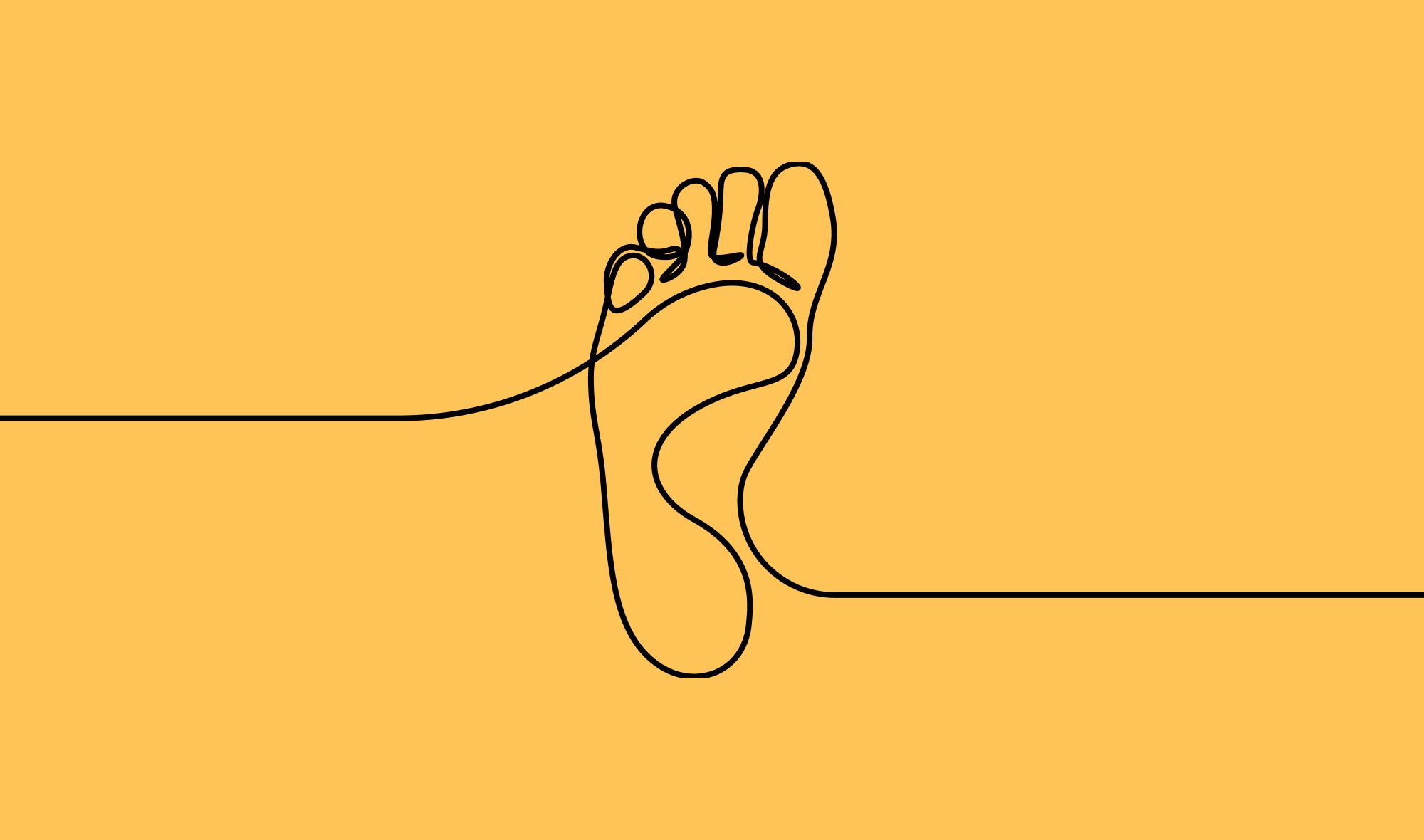From chaos to calm: how to center yourself in a busy world
By Julian Lewis • February 13, 2023

Today's world can be incredibly chaotic and fast-paced, with constant demands on our time and attention. The advent of technology has made it easier to stay connected, but it has also led to an expectation of constant availability and a never-ending stream of notifications and distractions. The constant pull of our smartphones, emails, and social media can make it difficult to focus on one task at a time and to disconnect from the constant chatter of the digital world.
Additionally, many of us are also juggling multiple responsibilities such as work, family, and personal obligations. This creates tension and can make the internal chaos worse, leading to feelings of stress, overthinking, and anxiety.
The good news is there are many transformative practices that you can adopt if you are feeling off-center and need to recalibrate. In this blog, we will be discussing ways to find peace and balance in the midst of the hectic and fast-paced world we live in. From mindfulness practices to self-care techniques, we will explore various methods for reducing stress, harnessing excessive energy, and promoting a sense of inner calm.
Whether you're a busy professional, a student, or a stay-at-home parent and finding your center eludes you, acknowledging the problem is half the battle. With these mind-training strategies, you can equip yourself to do a better job navigating the demands of daily life with less chaos and a greater sense of ease and tranquility.
What is centering?

Centering refers to the process of bringing oneself into a mental and emotional state of balance and inner peace, often through meditation, mindfulness, or other practices. It can also refer to the process of aligning one's thoughts and emotions with one's values and goals, in order to better navigate challenging situations and maintain a sense of well-being.
The practice of centering oneself has roots in many different cultures and traditions. In Eastern traditions such as Buddhism and yoga, centering oneself is often achieved through meditation, mindful walking, or tai chi, which has been practiced for thousands of years.
In Western traditions, different practices such as mindfulness, which originated in the field of psychology and has been popularized in recent years, have been used to help individuals center themselves. Additionally, many indigenous cultures have long-standing practices that involve connecting with nature, community, and spirituality in the centering process.
In the field of psychotherapy, Carl Rogers, a humanistic psychologist, introduced the concept of centering as a way to understand the process of becoming more self-aware, and how it can lead to personal growth and change.
Centering practices have been used for centuries to help people manage stress, improve emotional regulation, combat self-criticism, and find inner peace. Nowadays, thought leaders and creative professionals widely recognize it as a core component of many psychological and therapeutic approaches, including mindfulness-based therapies, and it is used in many settings such as schools, hospitals, and workplaces.
For a comprehensive list of shadow work books, check out our Top 10 Shadow Work Books to Help You Heal.
Four intelligence centers

The Four Intelligence Centers, also known as "The Four Quadrants," is a model that describes four different ways in which individuals process information and experience the world.
These centers are often used in coaching, therapy, and personal development to help individuals understand and work with their unique strengths and challenges. The four centers are:
The Mental Center
This center is associated with the mind and the intellect. People who have a strong Head Center tend to be analytical, logical, and objective, and they process information primarily through their thoughts and reason.
The Physical Center
Also known as the "Gut Center", this quadrant is associated with the physical state of the body and its instincts. People who have a strong Physical Center are usually action-oriented, decisive, and confident. They also rely very heavily on their physical sensations and gut reactions to make decisions.
The Emotional Center
People who process information through their emotions and intuition tend to have a strong Emotional Center or Heart Center. Common personality traits include being naturally empathetic, compassionate, and sensitive.
The Spiritual Center
The fourth center refers to a connection to something greater than oneself. People who have a strong Spirit Center tend to be spiritual, reflective, and connected to their inner self, and as such, they process information primarily through the lens of their spiritual beliefs, values, and purpose.
When Centering Is Useful

In general, centering is a useful practice for anyone who wants to improve their emotional regulation, increase nonjudgmental awareness and release internal tension. Whether it's a regular practice or a tool for brief moments, it can be beneficial for virtually everyone, regardless of the personal or professional situation.
Centering is most helpful when an individual is feeling overwhelmed, stressed, or out of balance. This can happen in a variety of situations, such as during a difficult personal or professional challenge, when dealing with difficult emotions, negative self-talk or mental disorders, or when facing a major decision. In these situations, centering can help to bring a sense of clarity, allowing the individual to navigate the situation more effectively.
Additionally, centering can be helpful as a regular practice, as it can help individuals to maintain a sense of well-being and balance in their daily lives, regardless of the specific challenges they may be facing. Regular practice of centering can help individuals to become more self-aware, and to develop effective strategies for managing stress, difficult emotions, and impulse control.
Keep in mind, not all centering practices work for everyone; what resonates for one person may not be effective for another. Furthermore, what works for an individual at one time may not be helpful at another time, as our needs and preferences can change over time. It is important to be open to trying different approaches and to consult with a qualified professional if necessary.
How to Center Yourself: 6 Transformative Practices for Centering

When it comes to centering, there are many different powerful practices that can be explored, each with its own unique benefits. We've compiled a list of certain exercises that can help you to find balance and inner fulfillment.
Breathe like it matters: Conscious Breathing
Conscious breathing, also known as "mindful breathing," is a practice that involves breathing properly and intentionally and bringing awareness to the breath as a means of centering oneself. This practice has roots in many different cultures and traditions, including Eastern spiritual practices such as yoga and meditation, as well as Western psychological and therapeutic approaches.
When we breathe naturally and bring our attention to our breath, we are able to slow down and focus on the current moment, rather than getting caught up in thoughts and emotions. This can help to calm the mind and reduce feelings of stress and anxiety. Additionally, breath is a physical sensation that is always present and can be easily accessed, making it a useful tool for centering oneself.
One easy exercise for conscious breathing is the "4-7-8" breath. This involves inhaling for a count of 4, holding the breath for a count of 7, and exhaling for a count of 8. This exercise can be done for several minutes at a time and can be used to help calm the mind and reduce feelings of stress and anxiety.
Another exercise you could try is "Box Breathing"; Start by inhaling for 4 seconds, hold the breath for 4 seconds, exhale slowly for 4 seconds, and then hold the breath for 4 seconds again. This can be repeated for several minutes.

Zhan Zhuang: Stand Like a Tree
"Standing like a tree" is an effective practice that involves assuming a specific posture that is meant to help center oneself and bring balance to the mind and body. This practice has its origins in Zhan Zhuang, which is a Chinese martial arts and qigong practice that involves standing in specific postures for extended periods of time.
The idea behind "standing like a tree" is to align the body in a way that allows for optimal balance and grounding. The posture typically involves standing with the feet shoulder-width apart, with the knees slightly bent, and the tailbone tucked under. The arms are often held in a specific position, such as hanging by the sides or raised above the head. The focus is on the breath and the sensation of the body.
An example of an easy exercise for "standing like a tree" is the "Tree Pose." This involves standing with your feet shoulder-width apart and grounding yourself through your feet. You then bring one foot to rest on the inner thigh of the opposite leg, aligning the knee over the ankle. You can then raise your arms above your head and bring your palms together, as you take deep and slow breaths.
Establish a Plumb Line: Attention on Your Third Eye

Establishing a plumb line refers to the practice of aligning the body in a way that promotes balance and grounding. This is often achieved by bringing attention to the "third eye," which is the point between the eyebrows and is said to be associated with intuition and inner wisdom.
One way to establish a plumb line quickly is to stand with your feet shoulder-width apart and imagine a straight vertical line running from the crown of your head, through the center of your body, and down to the ground. This can help to bring awareness to your alignment and to correct any imbalances in your posture.
Another way to practice this is by standing with your feet hip-width apart, bending your knees slightly and tucking your tailbone under, engaging your core, and lengthening your spine. Bring your attention to the "third eye" and imagine a vertical wall running from the top of your head to the ground, passing through your third eye. Take a few deep breaths while you focus on your third eye and imagine the plumb line keeping your body in balance and alignment.
Visualizing this line running from the crown of the head through the center of the body to the ground helps to bring present awareness to the alignment and balance of the body. This visualization can help to correct any imbalances in the posture and bring balance to the mind and body, as well as reduce feelings of stress and anxiety.
Belly Bliss: Attention on Your Navel
The practice of bringing attention to the sensation of breath in the belly, known as "belly bliss" or "navel gazing", is another powerful practice as you learn how to center yourself. The navel area is also considered to be a powerful energy center in some traditions, and it is believed that by focusing on this area, individuals can tap into this energy and gain a deeper understanding of themselves and the world around them.
Individuals can slow down and focus on the present moment, rather than getting caught up in thoughts and intense emotions. This can help to calm the mind and reduce feelings of stress and anxiety. Additionally, breath is a physical sensation that is always present and can be easily accessed, making it a useful tool for centering oneself.
To practice "belly bliss" or "navel gazing", sit in a comfortable position, with your back straight and your feet planted firmly on the ground. Bring your attention to your navel area and focus on the sensation of the breath as it moves in and out of your belly. You can place your hand on your belly and feel it rise and fall with each breath. You can also count your breath, inhaling and exhaling slowly.
Feel Your Feet: Shift Your Awareness

The practice of "feeling your feet" works by directing your attention to the physical sensation of your feet on the ground, which can help to anchor you in the moment and release tension and distractions in the mind in many different circumstances. This can be particularly helpful if you find that you are frequently getting lost in thoughts or worries, as it can help to bring you back to the present moment and increase your sense of calm and well-being.
To practice "feeling your feet," find a comfortable upright seated position or standing position with your feet firmly planted on the ground. Close your eyes and as you take a deep breath, slowly and deliberately focus your attention on the sensation of your feet on the ground.
Notice the sensation of pressure, warmth, and any other feelings in your feet. Keep your focus on your feet and let any thoughts drift by without engaging with them. Continue to focus on your feet for a few minutes, keeping your breath steady and slow.
Heart Centering: Attention on Your Heart

Heart centering is a practice that involves focusing one's attention on the heart area, in order to bring about a conscious state of calm and balance. It is based on the idea that the heart is not only a physical organ but also a spiritual and emotional center. By centering oneself in the heart region, one can access inner wisdom and compassion, and connect with a deeper sense of purpose and meaning.
One way to practice heart centering at home is to sit or lie down in a comfortable position and bring awareness to your breath. Take a few deep breaths, and as you exhale, imagine that you are breathing out any tension or stress that you may be holding in your body.
Then, place your hand over your heart, and focus your attention on the sensation of your heartbeat. Try to relax your body and let go of any distracting thoughts or worries. Imagine that you are breathing in and out through your heart and that with each inhale, you are filling your heart with love and positivity, and with each exhale, you are releasing any negative emotions or thoughts.
You can do this exercise for a few minutes, or for as long as you like. You can also add affirmations to this exercise like "I am worthy of love and compassion", "I choose to let go of negative thoughts and emotions" etc. This will help you to focus on positive thoughts and emotions, express gratitude, and bring a sense of peace and balance to your life.
Recap: Awareness precedes transformation
Centering oneself in a busy world can be a challenging task, but it is also essential for our well-being. By understanding the concept of the four intelligence centers, we can learn how to balance our physical, emotional, mental, and spiritual needs, and create a sense of inner harmony. Certain practices can provide an even greater benefit during times of stress or uncertainty, when we may feel more overwhelmed by the chaos of our surroundings.
It is important to remember that centering practices are not a one-time solution; it requires consistent effort to see the results. The answer lies in a lifelong journey to find inner peace and balance and a process of self-discovery and self-improvement.
By taking the time to find your center, you can tap into inner wisdom and compassion, promote positive mental health, and live a more fulfilling and meaningful life.
Explore the stages of spiritual awakening and how they intersect with centering practices.

Read more about: Shadow Work
About Julian Lewis
Julian Lewis is a driven and accomplished professional with a passion for driving positive change in the business world. He is the co-founder and COO at Zella Life.
His own experience as a professional of color in a Fortune 500 company led him to discover the limitations for advancement that many professionals like himself face. Determined to reach his full potential, Julian became an established business coach and entrepreneur, committed to supporting others in their pursuit of personal and professional growth.
Today, Julian is a recognized corporate trainer, coach, and leader, known for his ability to leverage real-life experiences and evidence-based methodologies to affect positive change within individuals and organizations. As the leader of Zella Life's coaching division, he is dedicated to empowering individuals and businesses to achieve their full potential.